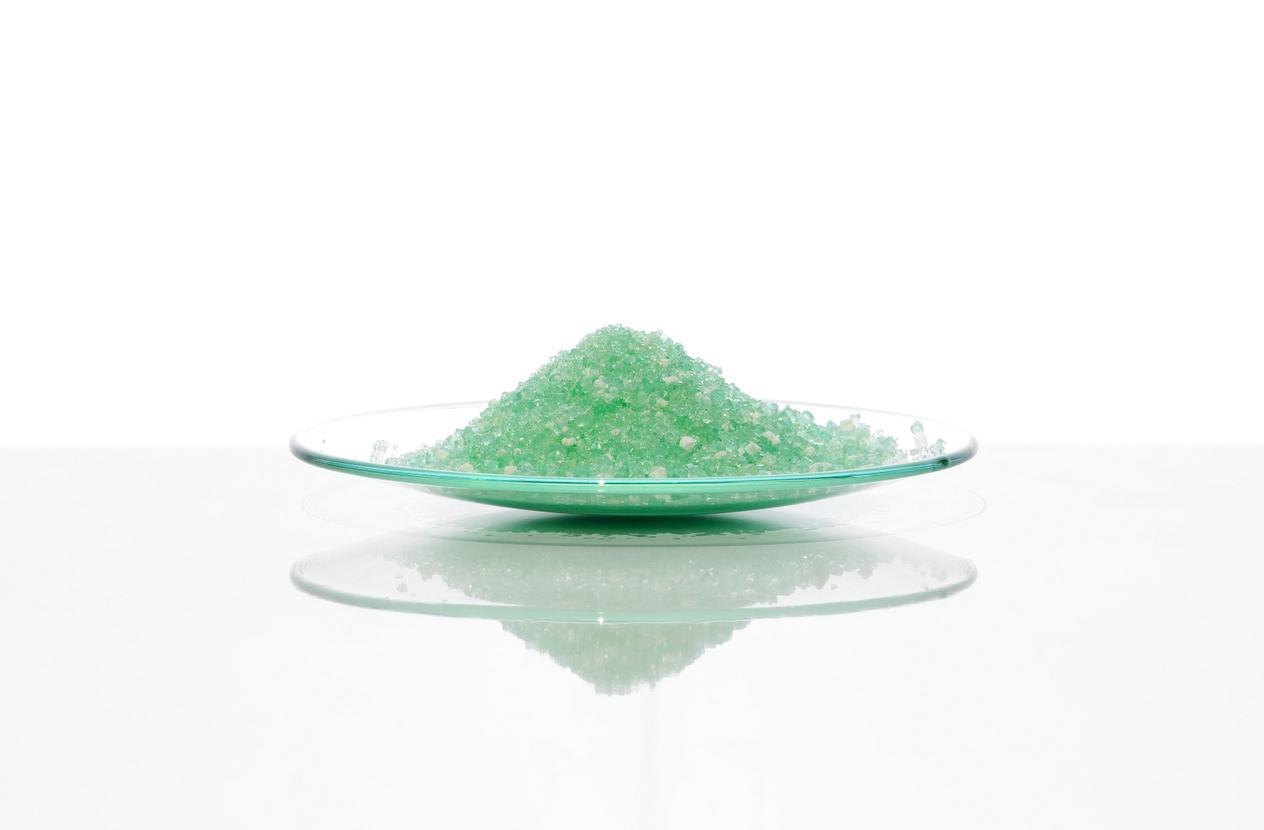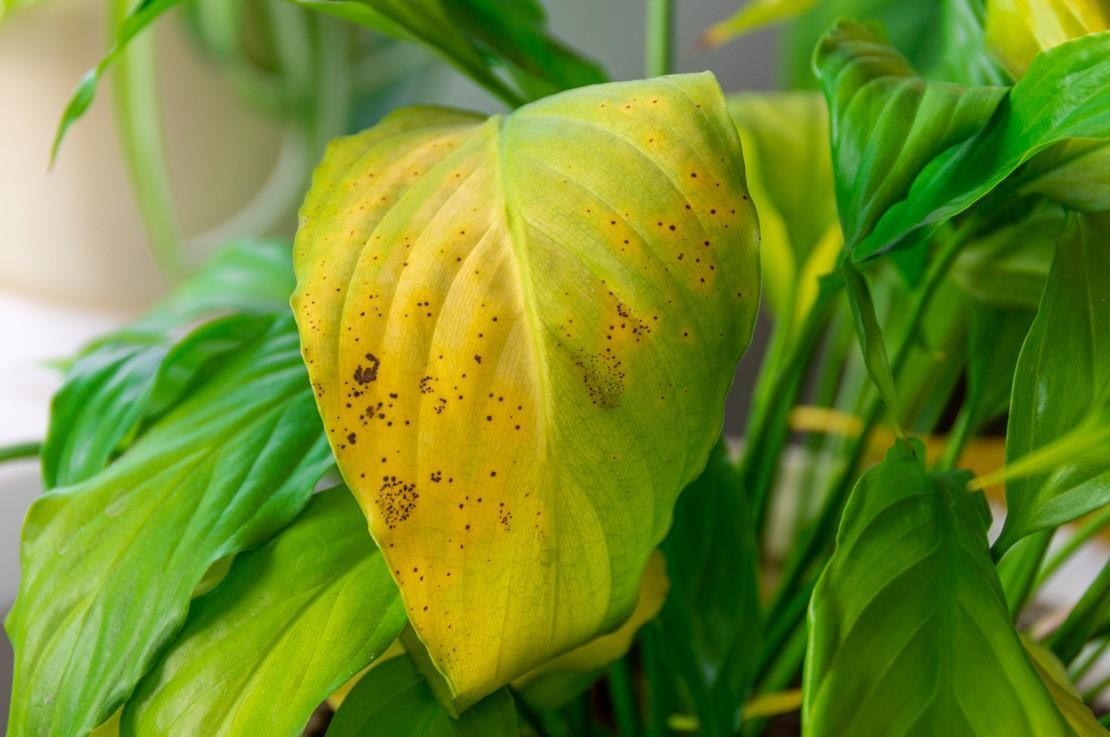What Is Iron Sulfate or Ferrous Sulfate for Plants?


One crucial element in nurturing healthy plants is ensuring they receive an adequate supply of essential nutrients. Among these vital nutrients, iron plays a significant role in plant growth and development. Iron sulfate, a valuable tool in plant care, offers a solution to address iron deficiency and its associated symptoms.
In this article from thedailyECO, we explore the benefits and applications of iron sulfate for plants. We also explore its role in combating iron chlorosis, a condition characterized by leaf yellowing due to insufficient iron levels.
What is iron sulfate?
Iron sulfate, also known as ferrous sulfate, is a commonly used gardening supplement that provides plants with an essential micronutrient: iron.
Iron is an important element for plants as it plays a crucial role in several physiological processes, including photosynthesis and the production of chlorophyll.
When applied to the soil or foliage, iron sulfate provides an accessible form of iron that can be easily taken up by plant roots or absorbed through leaf surfaces. It helps to correct iron deficiency, promoting greener foliage and improving the overall vigor of the plant.
It is worth noting that the effectiveness of iron sulfate in addressing iron deficiency depends on various factors, such as soil pH and the presence of other soil components that can affect iron availability to plants. In some cases, adjusting the soil pH or using chelated forms of iron may be necessary for better iron uptake.
You might be interested in this other article, where we explain the difference between compost and fertilizer.
What is iron sulfate used for plants?
Iron sulfate is an indispensable tool for combating iron chlorosis, a common nutritional disorder in plants. Iron chlorosis manifests as a distinct yellowing of the leaves, primarily between the veins, while the veins retain their green color. This interveinal chlorosis can be a noticeable and concerning issue for gardeners and plant enthusiasts.
The reason behind this yellowing lies in the crucial role that iron plays in chlorophyll synthesis. Chlorophyll, often referred to as the "green pigment," is responsible for capturing light energy from the sun and converting it into chemical energy through the process of photosynthesis. Without an adequate supply of iron, plants struggle to produce sufficient amounts of chlorophyll, resulting in a decline in photosynthetic activity.
Chlorophyll consists of a complex structure that contains a central magnesium ion. However, iron is essential for the synthesis of chlorophyll molecules. Specifically, iron is required for the assembly of the porphyrin ring, the core structure of chlorophyll that surrounds the central magnesium ion. Without iron, the porphyrin ring cannot form properly, impairing chlorophyll production and reducing its functional efficiency.
As a consequence of iron deficiency, the chlorophyll levels decrease in affected plant tissues. Since chlorophyll is responsible for the green coloration in leaves, the reduced chlorophyll content leads to the appearance of yellowing or pale leaves. The distinctive interveinal chlorosis occurs because iron, being relatively immobile within the plant, is not easily transported from older leaves to newer growth. Hence, the deficiency symptoms primarily manifest in younger leaves where the demand for iron is higher.
By providing iron sulfate to plants experiencing iron chlorosis, gardeners can address the underlying nutrient deficiency and restore healthy chlorophyll synthesis. Iron sulfate serves as a readily available source of iron that can be absorbed by plant roots or applied as a foliar spray. Once absorbed, the iron is incorporated into the chlorophyll molecule, facilitating the reestablishment of proper chlorophyll levels and allowing plants to regain their vibrant green coloration.
Discover more about the importance of chlorophyll in plants and explore its different types in this other article.

How to make homemade iron sulfate
Creating homemade iron sulfate can be a cost-effective option for gardeners who prefer a DIY approach. Here's a simple method to make iron sulfate at home:
Materials needed:
- Iron nails or steel wool
- Distilled water
- Plastic or glass container
- Measuring cup or scale
- Stirring utensil
- Filter or cheesecloth
- Spray bottle (optional)
Instructions:
- Start by gathering the iron nails or steel wool. These will serve as the source of iron for the iron sulfate solution.
- Measure or weigh the iron nails or steel wool to ensure the appropriate ratio of iron to water. A common ratio is 1 part iron to 10 parts water (e.g., 100 grams of iron to 1 liter of water).
- Fill the plastic or glass container with distilled water, following the measured quantity based on the desired ratio.
- Carefully add the iron nails or steel wool to the water in the container.
- Stir the mixture gently to facilitate the dissolution of iron into the water. The water may turn slightly yellow or brownish as the iron reacts.
- Cover the container loosely to prevent dust or debris from entering while allowing for airflow.
- Place the container in a cool, dry location away from direct sunlight. The solution needs time to react and form iron sulfate.
- Allow the mixture to sit undisturbed for several days or even weeks, periodically checking on its progress. Over time, the iron will oxidize in the presence of water and air, creating iron sulfate.
- Once the reaction is complete, carefully pour the solution through a filter or cheesecloth to remove any solid particles or undissolved iron. This will yield a clear iron sulfate solution.
- Transfer the filtered solution into a suitable container for storage. A clean plastic or glass bottle works well.
If you prefer a foliar application, you can pour the iron sulfate solution into a spray bottle for easy and targeted application to plant foliage.
It's important to note that homemade iron sulfate may not have the same consistency or concentration as commercially available products. Therefore, it's recommended to perform a soil test and consult with a gardening expert to determine the appropriate dosage and application method for your specific plants and soil conditions.
Additionally, handle iron and iron sulfate solutions with care and avoid contact with skin or eyes. Properly label and store the solution in a safe place, out of reach of children or pets.
How to apply iron sulfate for plants
To address iron deficiency and foster healthier growth in plants, applying iron sulfate can be highly beneficial. Here are practical guidelines for effectively using iron sulfate, whether through soil application or direct foliar application on leaves.
Soil application
- Perform a soil test to assess the pH and nutrient levels in the soil. Iron availability to plants can be influenced by soil pH, so it's important to ensure the soil pH is within the appropriate range (typically around pH 6.0 to 7.0) for optimal iron uptake.
- Scatter the iron sulfate granules evenly around the base of the plants, avoiding direct contact with the foliage. Alternatively, you can mix the granules with soil before planting or apply them as a topdressing.
- Gently incorporate the iron sulfate into the soil using a rake or cultivator, ensuring it is evenly distributed.
- Water the area thoroughly after application to help dissolve the iron sulfate and facilitate nutrient absorption by the roots.
Monitor the plants over time and make additional applications as needed.
Foliar application
Foliar spraying can be a more direct and rapid method of providing iron to plants, especially when addressing severe iron deficiency symptoms.
- Prepare a diluted iron sulfate solution by mixing the recommended amount of iron sulfate with water. Follow the instructions provided on the product label for the appropriate concentration.
- Pour the solution into a spray bottle or a garden sprayer.
- Ensure that the plants are not under heat or direct sunlight when applying foliar spray to minimize the risk of leaf burn.
- Spray the iron sulfate solution evenly onto the foliage, making sure to cover both sides of the leaves.
- Avoid excessive spraying, which may cause runoff or waste the solution.
- Repeat the foliar application as necessary, following the recommended frequency provided by the product instructions or gardening expert.
It's important to note that iron sulfate can stain surfaces, so take care to avoid overspray and clean any spills or drips promptly.
You don't need to worry anymore about the black spots on your plant's leaves. Dive into our other article that unravels the mystery behind these spots and provides valuable insights on their causes.
If you want to read similar articles to What Is Iron Sulfate or Ferrous Sulfate for Plants?, we recommend you visit our Plant care and cultivation category.






